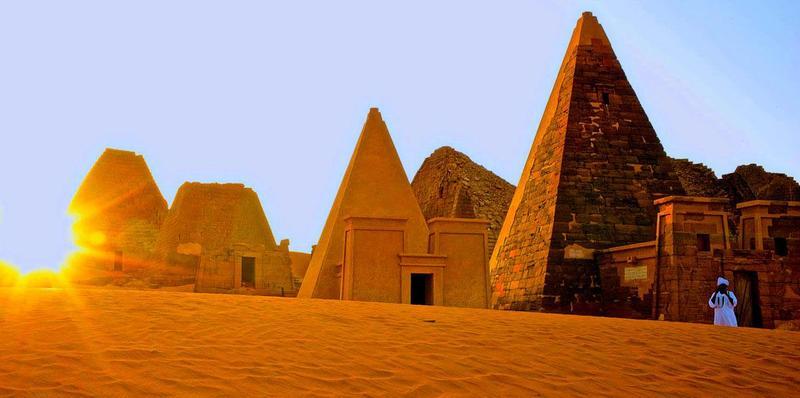Egypt isn’t the Country with the Most Pyramids – Sudan has Approximately 255 of Them
Egypt isn’t the Country with the Most Pyramids – Sudan has Approximately 255 of Them
The area of the Nile valley known as Nubia, which lies within present-day Sudan, was home to three Kushite kingdoms during antiquity. The first had its capital at Kerma (2600–1520 BC). The second was centered on Napata (1000–300 BC). The last kingdom was based around Meroë (300 BC–AD 300).
Kerma was Nubia’s first centralized state with its own indigenous forms of architecture and burial customs.
The last two kingdoms, Napata and Meroë, were heavily influenced by Egypt culturally, economically, politically, and militarily. The Kushite kingdoms, in turn, competed strongly with Egypt in economic and military terms.
In 751 BC, the Kushite king Piankhi overthrew the 24th Dynasty and united the entire Nile valley from the delta to the city of Napata under his rule. Piankhi and his descendants ruled as the pharaohs of the Twenty-fifth Dynasty. The Napatan domination of Egypt ended with the Assyrian conquest of Egypt in 656 BC.
Around 255 pyramids were eventually constructed at three sites in Nubia over a period of a few hundred years. They served as tombs for the kings and queens of Napata and Meroë.
The first of these was built at the site of El-Kurru, including the tombs of King Kashta and his son Piye (Piankhi), together with Piye’s successors Shabaka, Shabataka, and Tanwetamani. Fourteen pyramids were constructed for their queens, several of whom were renowned warrior queens.
This can be compared to approximately 120 much larger pyramids that were constructed in Ancient Egypt over a period of 3000 years.
Later Napatan pyramids were sited at Nuri, on the west bank of the Nile in Upper Nubia. This necropolis was the burial place of 21 kings and 52 queens and princes including Anlami and Aspelta.
The bodies of these kings were placed in huge granite sarcophagi. Aspelta’s weighed 15.5 tons, and its lid weighed four tons. The oldest and largest pyramid at Nuri is that of the Napatan king and Twenty-fifth Dynasty pharaoh Taharqa.
The most extensive Nubian pyramid site is at Meroë, which is located between the fifth and sixth cataracts of the Nile, approximately 100 kilometers (62 miles) north of Khartoum. During the Meroitic period, over forty queens and kings were buried there.
The physical proportions of Nubian pyramids differ markedly from the Egyptian edifices. They are built of stepped courses of horizontally positioned stone blocks and range from approximately 6–30 metres (20–98 ft) in height, but rise from fairly small foundation footprints that rarely exceed 8 meters (26 ft) in width, resulting in tall, narrow structures inclined at approximately 70°.
Most also have offering temple structures abutting their base with unique Kushite characteristics. By comparison, Egyptian pyramids of a similar height typically had foundation footprints that were at least five times larger and were inclined at angles between 40–50°.
All of the pyramid tombs of Nubia were plundered in ancient times. Wall reliefs preserved in the tomb chapels reveal that their royal occupants were mummified, covered with jewelry and laid to rest in wooden mummy cases.
At the time of their exploration by archaeologists in the 19th and 20th centuries, some pyramids were found to contain the remains of bows, quivers of arrows, archers’ thumb rings, horse harnesses, wooden boxes, furniture, pottery, colored glass, metal vessels, and many other artifacts attesting to extensive Meroitic trade with Egypt and the Hellenistic world.
The pyramids were further damaged in the 1830s as the Italian doctor-turned-explorer and treasure hunter Giuseppe Ferlini blew the tops off about 40 tombs during his quest for treasure.
A pyramid excavated at Meroë included hundreds of heavy items such as large blocks decorated with rock art and 390 stones that comprised the pyramid. A cow buried complete with eye ointment was also unearthed in the area to be flooded by the Meroë Dam, as were ringing rocks that were tapped to create a melodic sound.
via Outdoor revival
Be the first to post a message!
